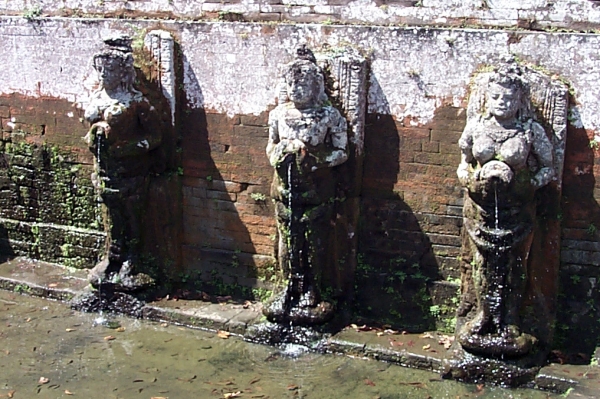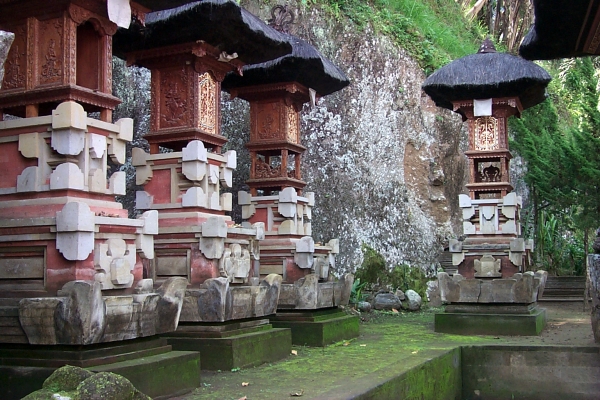Goa Gajah
Not far from the central Bali town of Ubud is Goa Gajah, popularly known as the Elephant Cave. The cave, which is carved into a cliff face, probably dates back to at least the eleventh century. You can't see the cave from the road, but you'll know you're there when you spot the tour buses and souvenir stalls.
From the parking lot you descend a curving trail cut into the cliff face, and the cave is slowly revealed. In front of the cave is a large flat courtyard. Sunk into the courtyard is a pair of bathing pools. Water trickles into the pools through water jars held by maidens carved into the rock wall. Legend has it that the pools were considered a sort of fountain of youth. Bathing in them was supposed to keep you young.
The entrance to the cave is richly carved in the face of a demon. You enter the cave through the demon's gaping mouth. The cave itself is really rather small. The short tunnel from the entrance dead-ends in front of a statue of Ganesha. A short tunnel to the left leads to an alter holding a yoni while to the right is an alter with several lingam.
To one side of the cave entrance are a line of small meru housing the gods of the temple. Follow them around and along the cliff face and you'll come to another larger meru set in a pool where you can leave offerings.
If you have the time you can also follow a narrow path down towards the river where, in amongst the thick foliage you can see the ruins of a Buddhist temple.
The souvenir stalls aren't worth looking at. You can get much nicer junk for less in Ubud. There is a restaurant next to the temple with a good view of the river gorge. Its a bit pricey by Bali standards but the food is good.
Photo Gallery
For more pictures of the Elephant Cave, see our on-line photo gallery.


